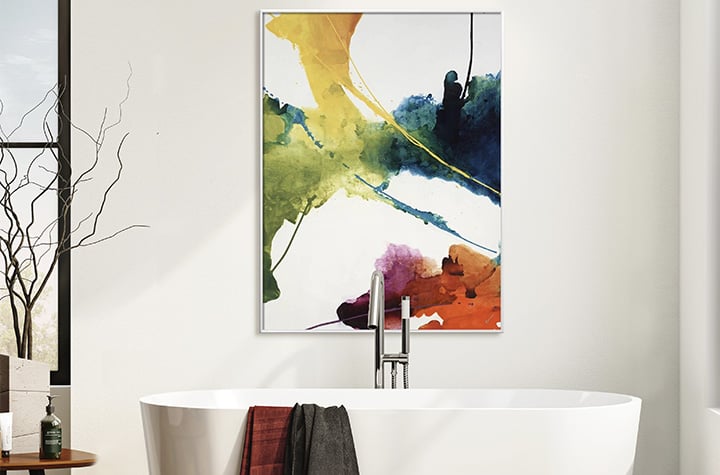How to Use Lightbox Displays in Photo Walls for Stunning Visuals
For professional photographers, crafting an engaging visual story is essential. One innovative way to elevate your photographic displays is by integrating lightbox displays into your photo walls. This technique not only highlights the intricacies of your work but also adds an interactive element that captivates viewers.
In this article, we will explore how to use lightbox displays in photo walls effectively, ensuring your art stands out in any setting. This method can transform spaces, creating a dynamic visual experience that draws in your audience.

Understanding Lightbox Displays
Lightbox displays are backlit frames that illuminate your photographs from behind, creating a vibrant and attention-grabbing effect. This technology enhances colors and details, making it an excellent choice for photographers who want to showcase their best work.
The beauty of lightboxes is their versatility. They can be used in various settings, from galleries to personal studios, and even in commercial spaces. By using lightboxes, photographers can highlight specific elements within their photos, offering a unique perspective to viewers.
Why Choose Lightbox Displays?
Choosing lightbox displays offers several benefits. First, the enhanced lighting brings out the richness of colors and textures in your photographs. This makes them pop, especially in dimly lit environments. Additionally, the backlighting creates a focal point, drawing viewers' eyes directly to your work.
Moreover, lightboxes can be customized to fit any size or shape, allowing for creative freedom in your displays. They add a professional touch to your exhibitions, making them memorable for viewers and potential clients alike.
Integrating Lightbox Displays into Photo Walls
Integrating lightbox displays into your photo walls is a straightforward process that can significantly enhance the impact of your displays. Start by selecting the photographs you want to highlight with a lightbox. Consider images that benefit from enhanced lighting, such as those with vivid colors or intricate details.
Next, plan the layout of your photo wall. Consider the overall aesthetic you want to achieve and how the illuminated elements will complement the rest of your photographs. For inspiration on designing photo walls, check out our article on designing photo walls for entryways.
Technical Considerations
When using lightbox displays, there are a few technical aspects to consider. First, ensure that the LED lights used in the lightbox provide a consistent and even illumination. Uneven lighting can distract from the photograph's details.
Additionally, consider the power source for your lightboxes. Ensure that they are easily accessible and do not interfere with the overall aesthetic of your photo wall. Wireless options are available and can simplify installation and maintenance.
Maximizing Impact with Creative Layouts
To maximize the impact of your lightbox displays, consider creative layouts that blend illuminated and non-illuminated photographs. This contrast can create a dynamic visual experience that guides the viewer's eye across the photo wall.
For example, you could arrange your lightboxes in a pattern or cluster them together for a dramatic effect. Alternatively, you might intersperse them among traditional frames for a balanced look. Explore gallery wall inspiration for more ideas on creative layouts.
Incorporating thematic elements can also enhance the storytelling aspect of your photo wall. For instance, if you're displaying travel photography, consider adding map elements to your design. Our article on integrating maps with photo walls offers additional insights.
Maintaining Your Lightbox Displays
Maintaining your lightbox displays is crucial to ensure they continue to provide vibrant and consistent lighting. Regularly clean the surfaces of your lightboxes to remove dust and fingerprints that can obscure the photographs. Use a soft, lint-free cloth and avoid harsh chemicals that could damage the materials.
Additionally, check the lighting components periodically to ensure they are functioning correctly. Replace any malfunctioning lights promptly to maintain the quality of your displays.
Conclusion
Using lightbox displays in photo walls is a powerful way to elevate your photographic presentations. By highlighting the details and enhancing the colors of your photographs, lightboxes create an engaging and memorable experience for viewers. Whether you're showcasing your work in a gallery, studio, or personal space, this technique can help your art stand out and leave a lasting impression.
For more insights into artistic displays and presentation techniques, visit our blog on artistic liberties in photo-based art. Additionally, explore the benefits of using wall art for more ideas on enhancing your home or studio.

FAQs
What are the benefits of using lightbox displays?
Lightbox displays enhance the color and detail of photographs, creating a focal point that captures viewers' attention. They are customizable and add a professional touch to any photo wall.
Can lightbox displays be used in any setting?
Yes, lightbox displays are versatile and can be used in various settings, including galleries, studios, and commercial spaces. They are adaptable to different sizes and styles.
How do I maintain my lightbox displays?
Regularly clean the surfaces of your lightboxes with a soft cloth to keep them clear of dust and fingerprints. Check the lighting components periodically to ensure they are functioning correctly.

